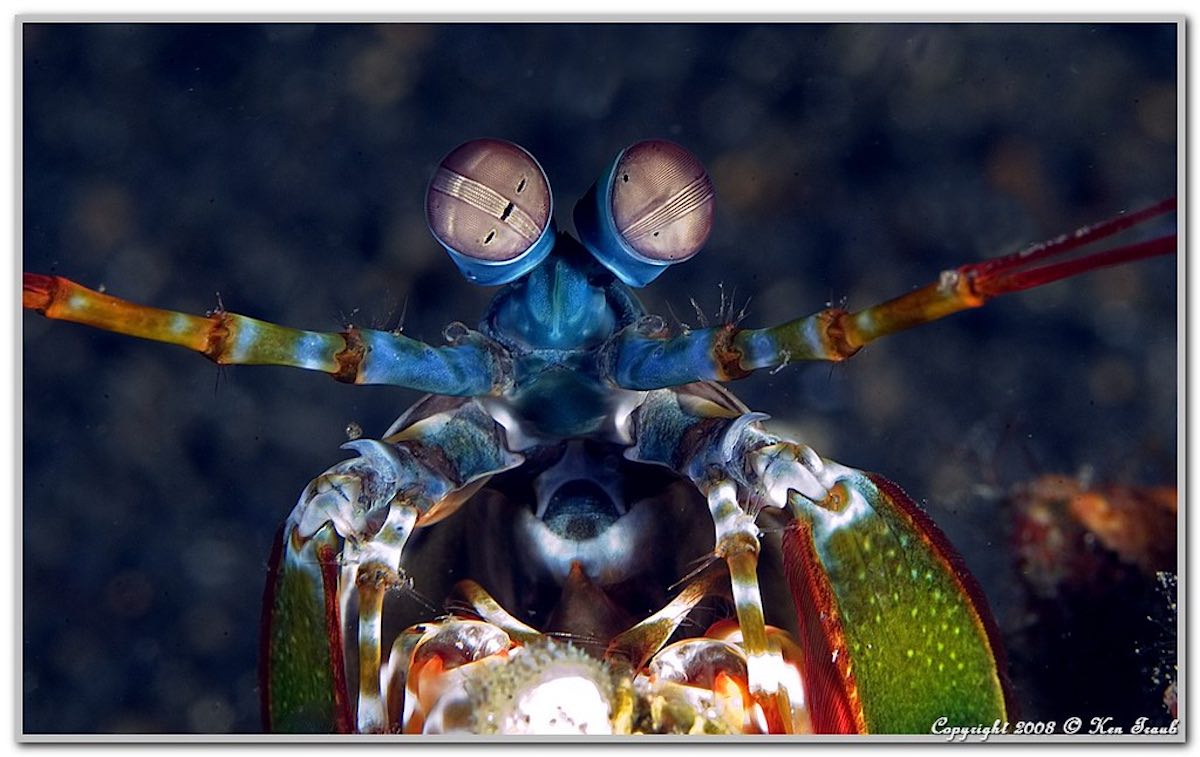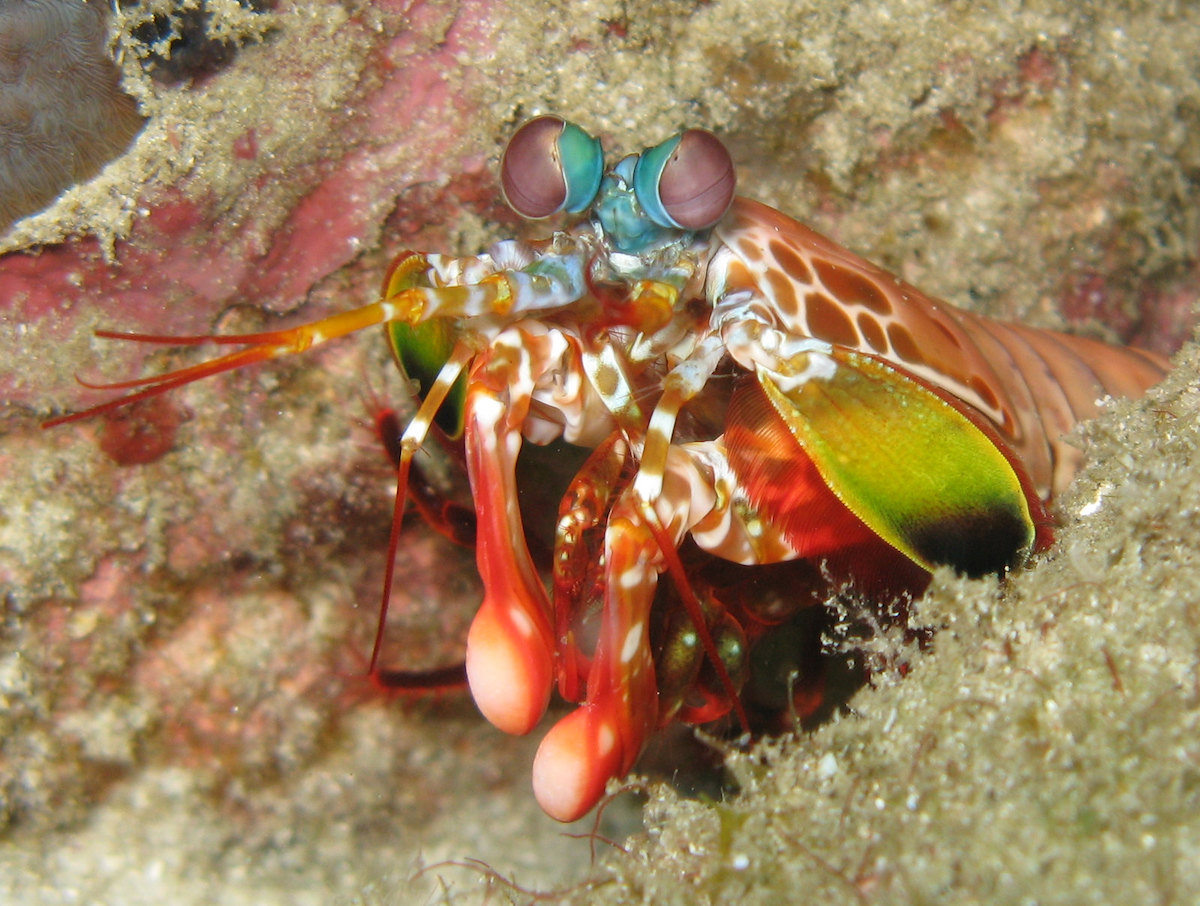Mantis Shrimp: The Ocean Predator You Need to Meet
Published by Ocean Conservancy
The mantis shrimp is no ordinary shrimp. Between their sharp eyes, wild colors and killer claws, mantis shrimp are some of the most impressive predators in the ocean. These colorful crustaceans may be small, but they pack a mighty punch that is unlike anything else in the sea.
First things first: mantis shrimp aren’t like the “shrimp” we’re used to. The critters you dip in cocktail sauce are only mildly related to mantis shrimp: they’re both in the class Malacostraca, which is the largest class of crustaceans. This class also includes well-known ocean animals like lobsters, crabs, krill and crayfish. But while the rest of those species are further grouped in the order Decapoda, mantis shrimp are in order Stomatopoda. That’s why sometimes you’ll hear them also referred to as stomatopods.
There are a few distinctive features that make mantis shrimp expert predators. First, stomatopod eyes are some of the most complicated eyes known in the animal kingdom. To see, animals have something in their eyes called photoreceptors, which are cells that respond to light. As humans, we have two types of photoreceptors called rods and cones. Mantis shrimp have up to sixteen types of photoreceptors, allowing them to see far more than we can! They can even see polarized light, which most (if not all) other animals can’t see.


In addition to seeing wild colors, mantis shrimp come in wild colors. Of the 450 species of mantis shrimp, the most famous is the peacock mantis shrimp, which lives up to its name with a carapace of vivid red, orange, green and blue. The peacock mantis shrimp is found in tropical regions in the Western Pacific and Indian Ocean, and its color makes it a favorite of the aquarium industry. But although these colorful creatures may look pretty, they aren’t easy keepers—these voracious predators have been known to devour all other animals in their tanks.
But the most impressive feature of the mantis shrimp is its punch. Mantis shrimp have two appendages (modified legs) in the front of their body that that use to attack their prey. These claws fall into one of two categories: smashers, which bludgeon prey, and spearers, which stab prey (either way, bad news for prey). Mantis shrimp can shoot their limbs at the speed of a bullet—literally. They can accelerate their clubs at speeds up to 51 miles per hour! This means that even larger prey barely stand a chance against the mantis shrimp. They move their claws so quickly that the movement results in a shockwave of bubbles that produce light in a phenomenon called sonoluminescence.
There’s a reason why these hard-punching, bright-colored crustaceans have captivated people around the world. Although they’re difficult to see in the wild (mainly because they lurk in small crevices and holes), it’s exciting to know these tiny invertebrate murderers are out there, taking down their prey one punch at a time.
Sign up for our emails!


The post Mantis Shrimp: The Ocean Predator You Need to Meet appeared first on Ocean Conservancy.
Read the full article at: https://oceanconservancy.org/blog/2020/01/02/mantis-shrimp-predator/


